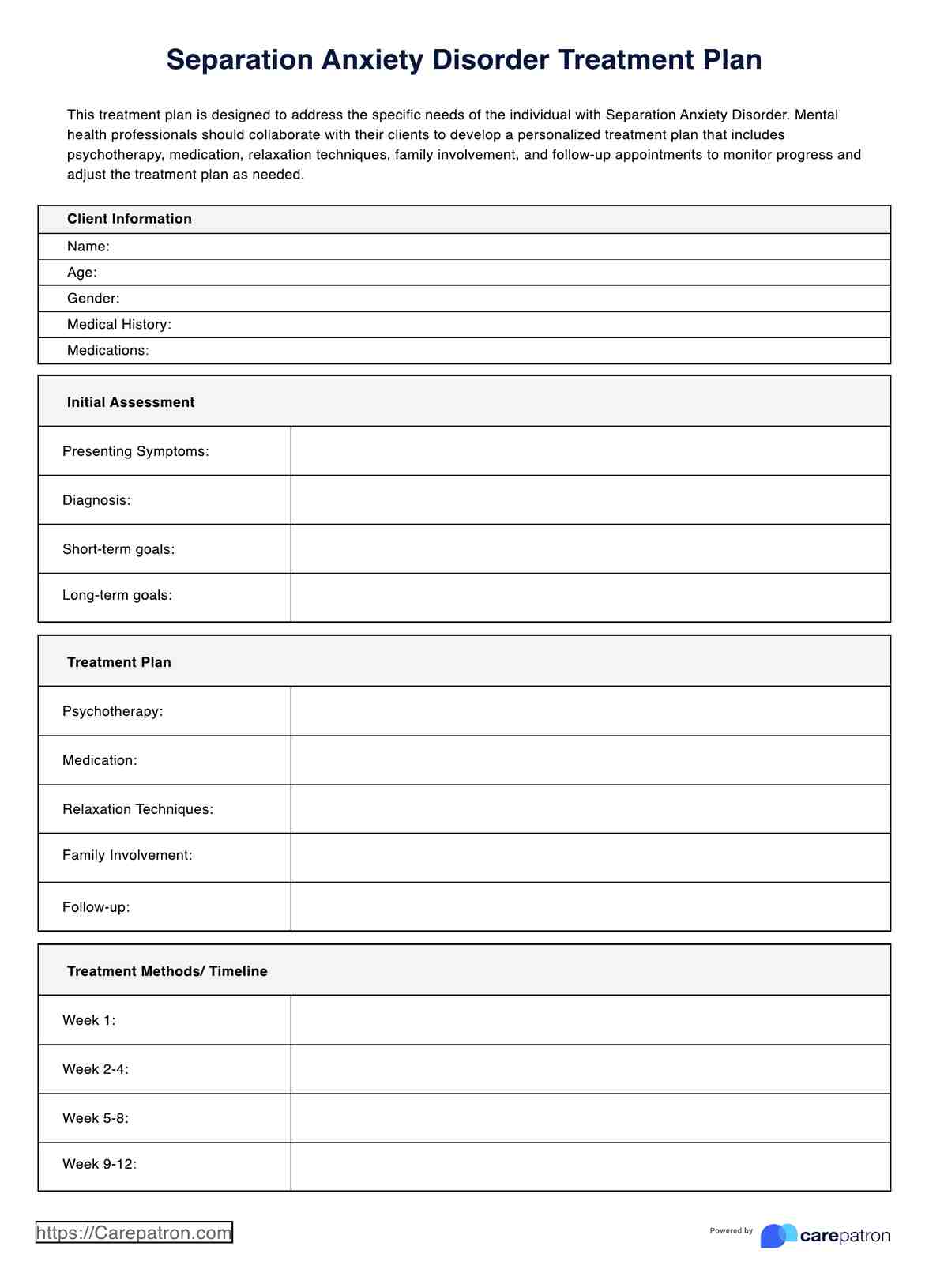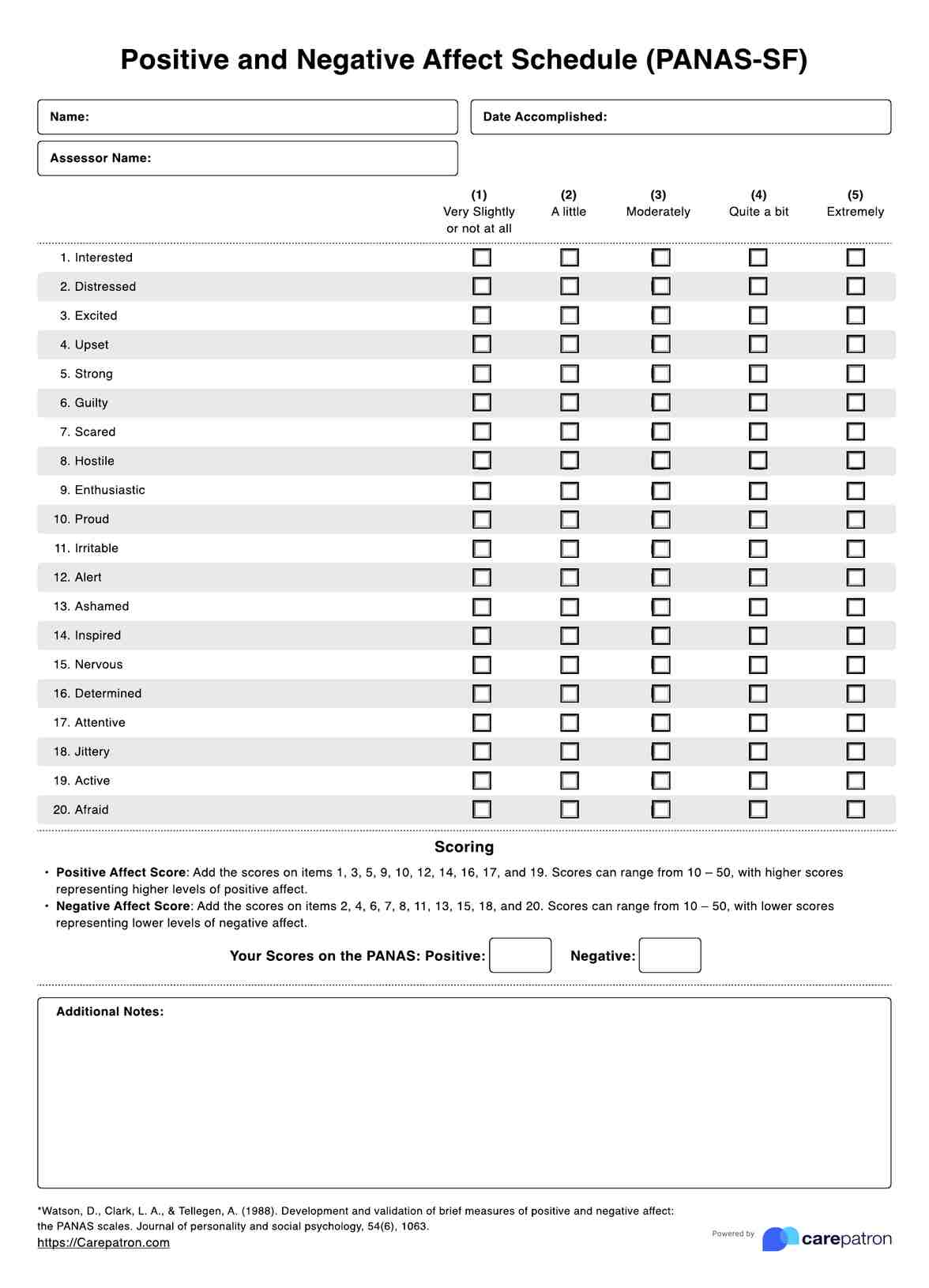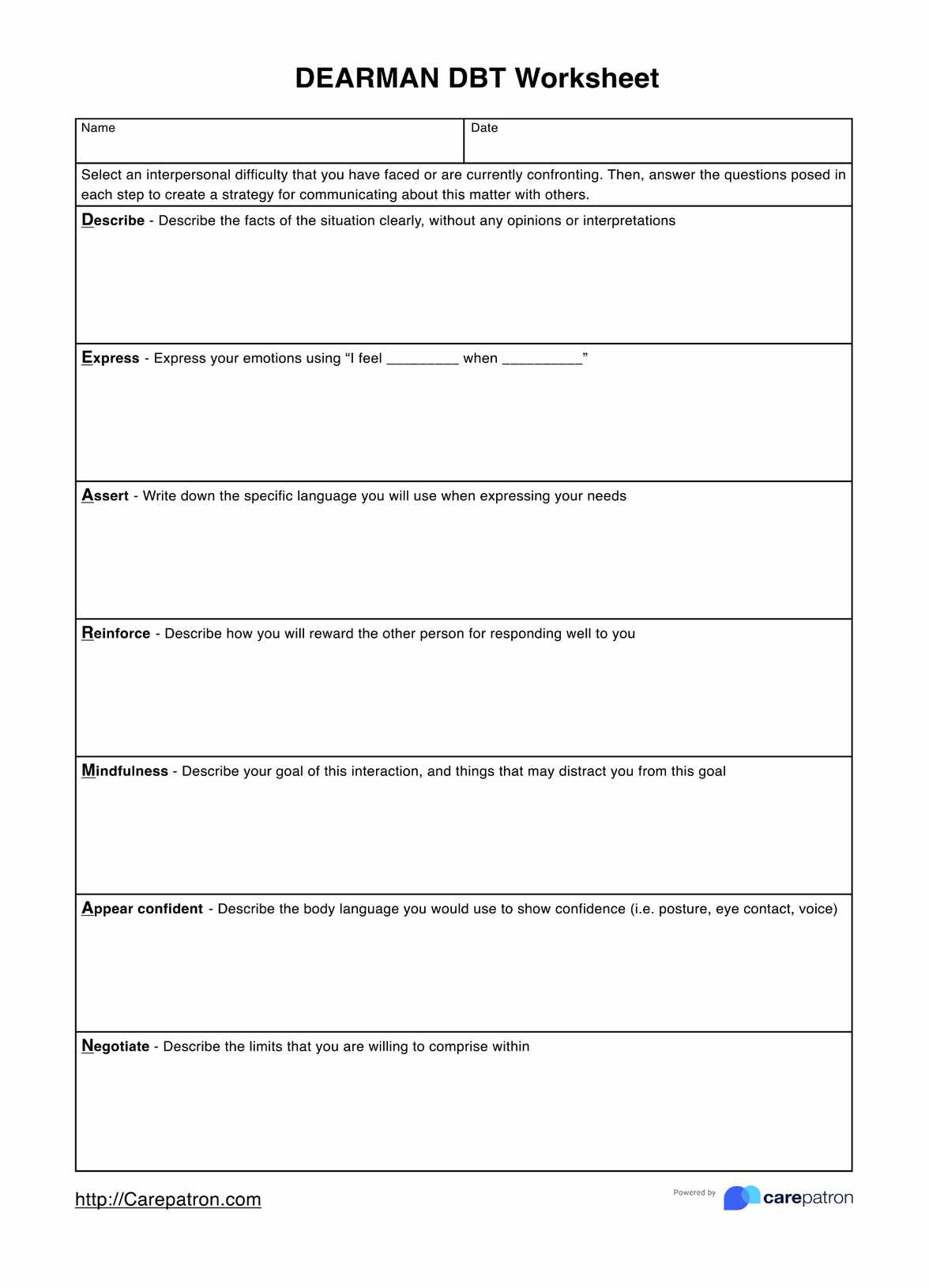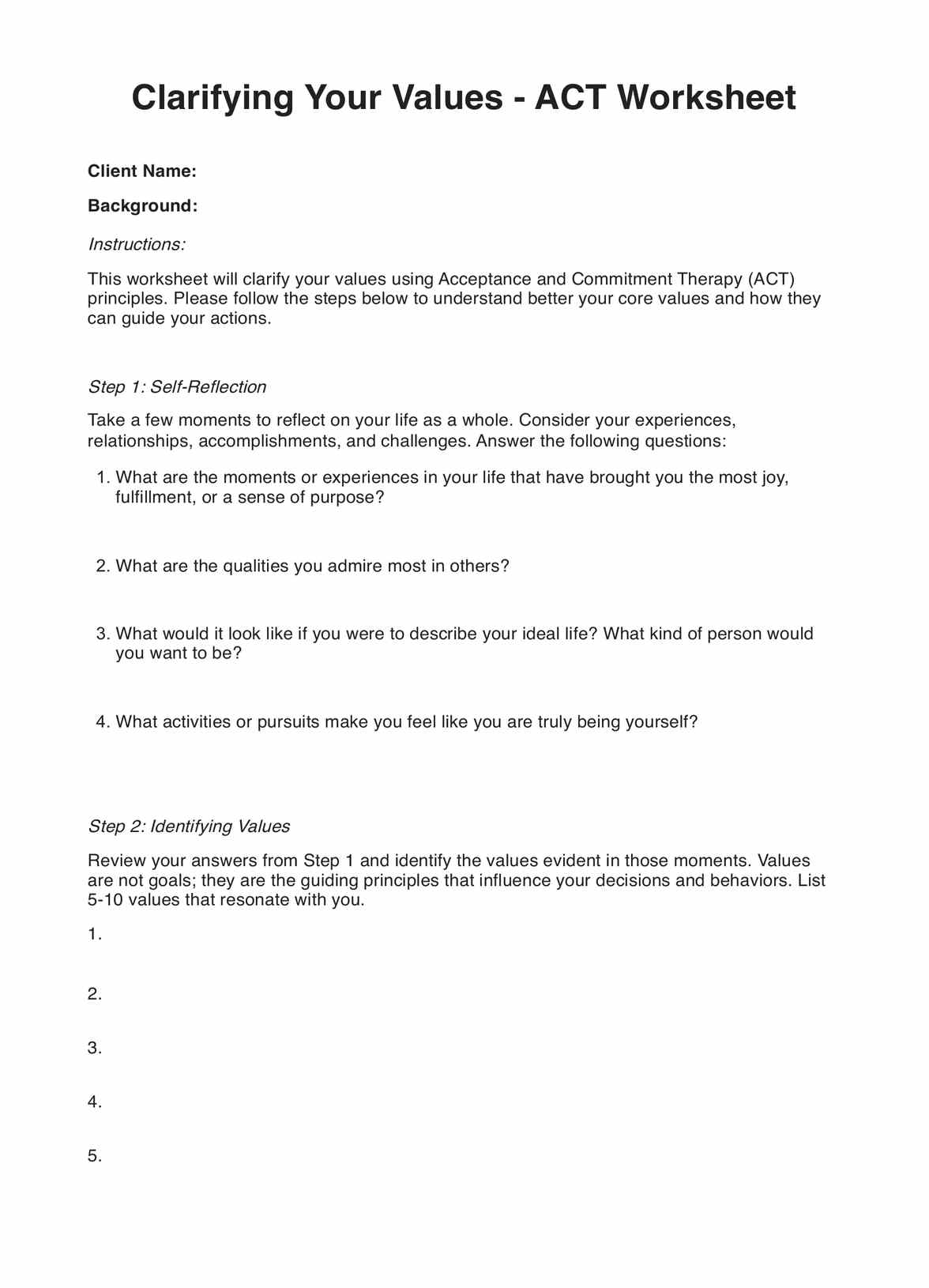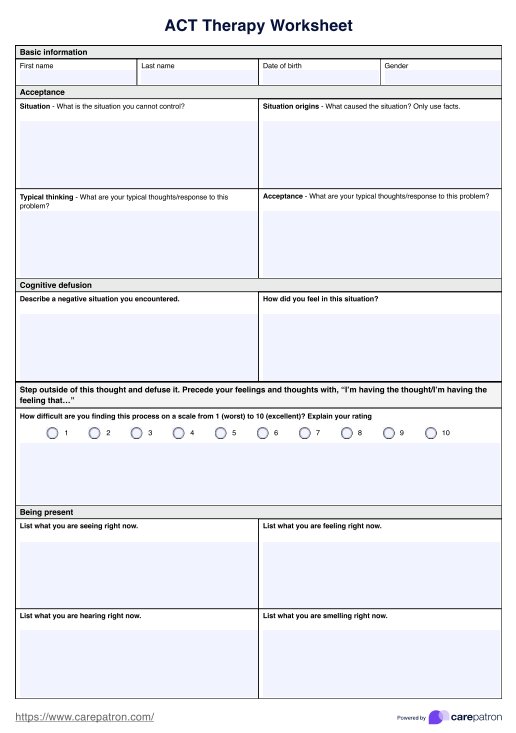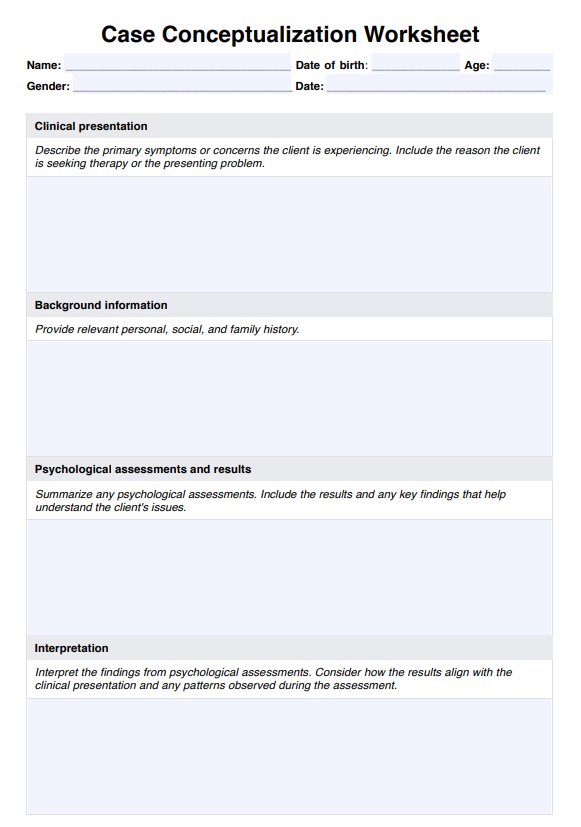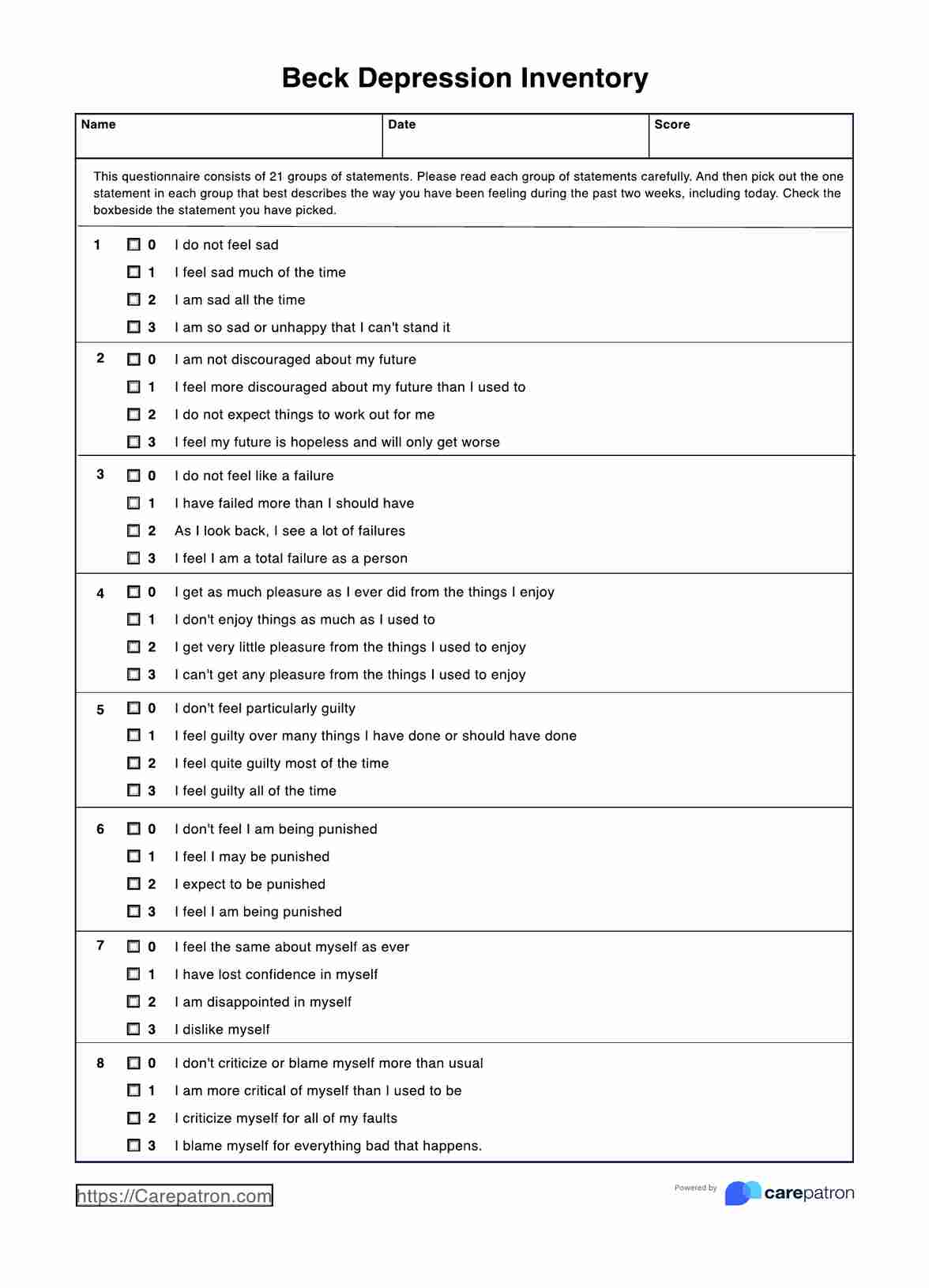The Costs of Avoidance ACT Worksheet
With The Costs of Avoidance ACT Worksheet, your patient can better identify what they get rid of, how to avoid them, and the costs of avoiding them.


What is Acceptance and Commitment Therapy?
In the 1980s, psychologist Steven Hayes developed Acceptance and Commitment Therapy, or , a type of action-oriented psychotherapy with roots in cognitive-behavioral and traditional behavior therapy. This type of therapy is used to treat mental and physical conditions such as OCD, depression, anxiety, psychosis, eating disorders, chronic pain and stress, and substance abuse.
Mental health professionals with ACT training aim to teach clients to accept instead of deny, avoid, or struggle with their feelings. Feelings are normal and appropriate responses to any situation, thought, or experience. Individuals need to recognize this fact and learn how to care for themselves in the face of difficult emotions.
More specifically, ACT teaches clients to develop core processes such as acceptance, cognitive defusion, mindfulness, self-as-context, values, and committed action. In the context of ACT, acceptance involves allowing oneself to feel and experience any thoughts or feelings without trying to deny, resist, or change them. Cognitive defusion changes how one responds to their thoughts and feelings from negative and damaging to more positive and beneficial. Meanwhile, mindfulness is being present with experiences without judging them.
Additionally, self-as-context means recognizing that a person’s thoughts, experiences, and emotions do not define them. Values refer to the principles or standards of behavior individuals strive to live for. Finally, committed action is taking the steps needed to make positive changes in life with the help of tools and information provided by mental health professionals.
ACT involves learning skills that can be used to face difficult situations more effectively and learn how to live life more meaningfully. By building these skills, clients can learn to observe their thoughts and feelings without being overwhelmed. This helps individuals create a more balanced and healthy outlook on life and develop healthier coping mechanisms for difficult times.
The Costs of Avoidance ACT Worksheet Template
The Costs of Avoidance ACT Worksheet Example
How to use The Costs of Avoidance ACT Worksheet:
Access and Download the Template
To access and download a printable or digital file of The Costs of Avoidance ACT Worksheet, you can do either of the following:
- Click the “Download Template” or “Use the Template” button
- Search for the worksheet by entering “The Costs of Avoidance ACT Worksheet” in the Carepatron’s template library’s search bar on the app or website
Fill Out the Template
Our template is designed to help you and your clients understand how they can process their emotions. After filling out the template, you can better assess what kind of help your client needs.
When our clients fill out the worksheet, we suggest they start by jotting down their thoughts, feelings, sensations, and memories associated with an emotion they’d like to process. This will help them better understand the emotion and how it has affected them in their life.
We also suggest your client write down all the different ways they’ve avoided or eliminated unpleasant thoughts/feelings, such as distractions, opting out, thinking strategies, using substances, etc., and note whether these are effective or beneficial to the client.
Discuss the Template
Once the client finished filling out the template, with their consent, you may proceed to discuss the template so you may proceed with a diagnosis or treatment plan.
Securely Store
Before you end your session, don’t forget to remind your patient to give you a copy of the worksheet so you may store it at a secure physical location or Carepatron, a HIPAA-compliant EHR.
When would you use The Costs of Avoidance ACT Worksheet?
The “The Costs of Avoidance ACT Worksheet” is designed specifically for healthcare professionals to use with clients who are going through or have gone through difficult experiences that cause them to feel discomfort.
It is an invaluable tool for licensed healthcare professionals like therapists, social workers, psychiatrists, psychologists, and counselors who have undergone additional training in ACT as they help their clients be more self-aware of their methods of avoidance so they can properly assess whether the cost of their actions is worth it and beneficial to their wellbeing.
The worksheet can help clients identify situations where they use avoidance techniques and measure the short-term and long terms costs those behaviors have on them. By helping your client understand how certain behavior can affect their mental health, you can help them make better decisions and take steps to improve the quality of their life.
What are the benefits of using The Costs of Avoidance ACT Worksheet?
Provide Insight
The Costs of Avoidance ACT Worksheet can be used by psychologists, therapists, and other mental health professionals to help their clients gain insight into the thoughts, feelings, sensations, or situations that make them feel uncomfortable. By exploring these experiences and identifying maladaptive avoidance behaviors they have developed to avoid these unpleasant experiences, the client can gain insight into the hidden costs of avoidance.
Establish Baselines for Comparison
A client may complete the worksheet multiple times, depending on the referring physician and the duration of time. The information gathered before the client's treatment plan serves as a baseline for assessing changes in the client after therapy sessions and exercises. Having a reference point facilitates the referring physician's evaluation of the plan's effectiveness and the need for adjustments.
Aid in Treatment Planning
The knowledge gained from the worksheet can be utilized to determine the formulation of a treatment plan. Furthermore, worksheets that have been completed during a treatment plan can serve as a foundation for either continuing with or modifying the current strategy.
Easily Accessible
Utilizing our free The Costs of Avoidance ACT Worksheet as a digital file, you and your client can effortlessly access and complete the worksheet on any device using a local PDF editor. Additionally, by storing the filled-out worksheet on Carepatron, you and your client can conveniently access it through the patient portal whenever necessary. Streamline your workflow and enhance accessibility with our user-friendly solution.
Commonly asked questions
A client usually takes 30 minutes to an hour to accomplish “The Costs of Avoidance ACT Worksheet.”
It can help them be more self-aware of the thoughts/feelings/sensations/memories they’d like to eliminate and the strategies they usually rely on to avoid or eliminate unpleasant thoughts or feelings. If answered correctly, the ACT Worksheet can also help a person discern which of their strategies are effective and beneficial to their life.
Practitioners with patients who constantly have unpleasant thoughts or feelings can use this, preferably during the first meeting or session, so that the referring physician can get a glimpse into the patient’s experiences, thought processes, and coping strategies to tough situations.


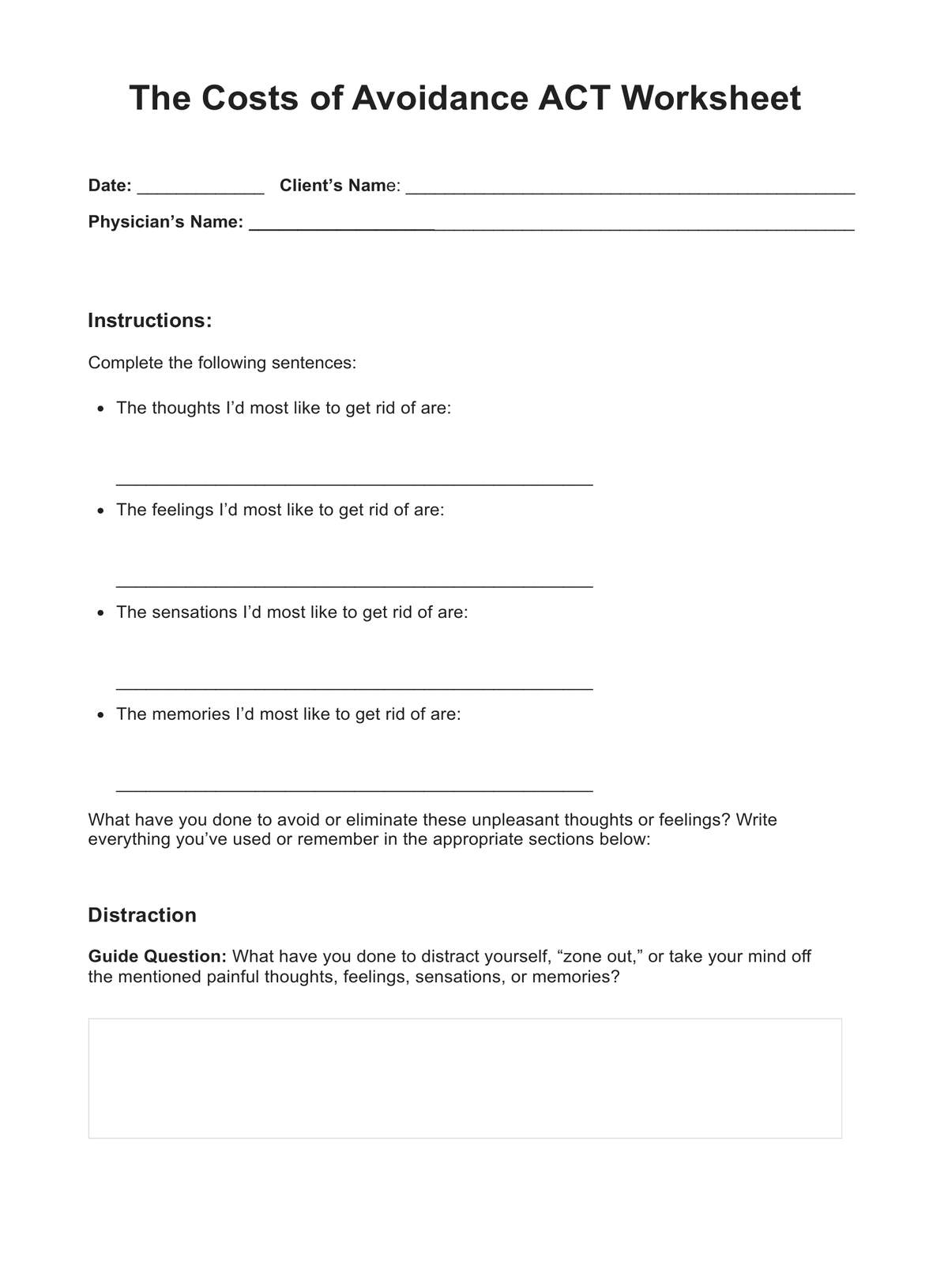
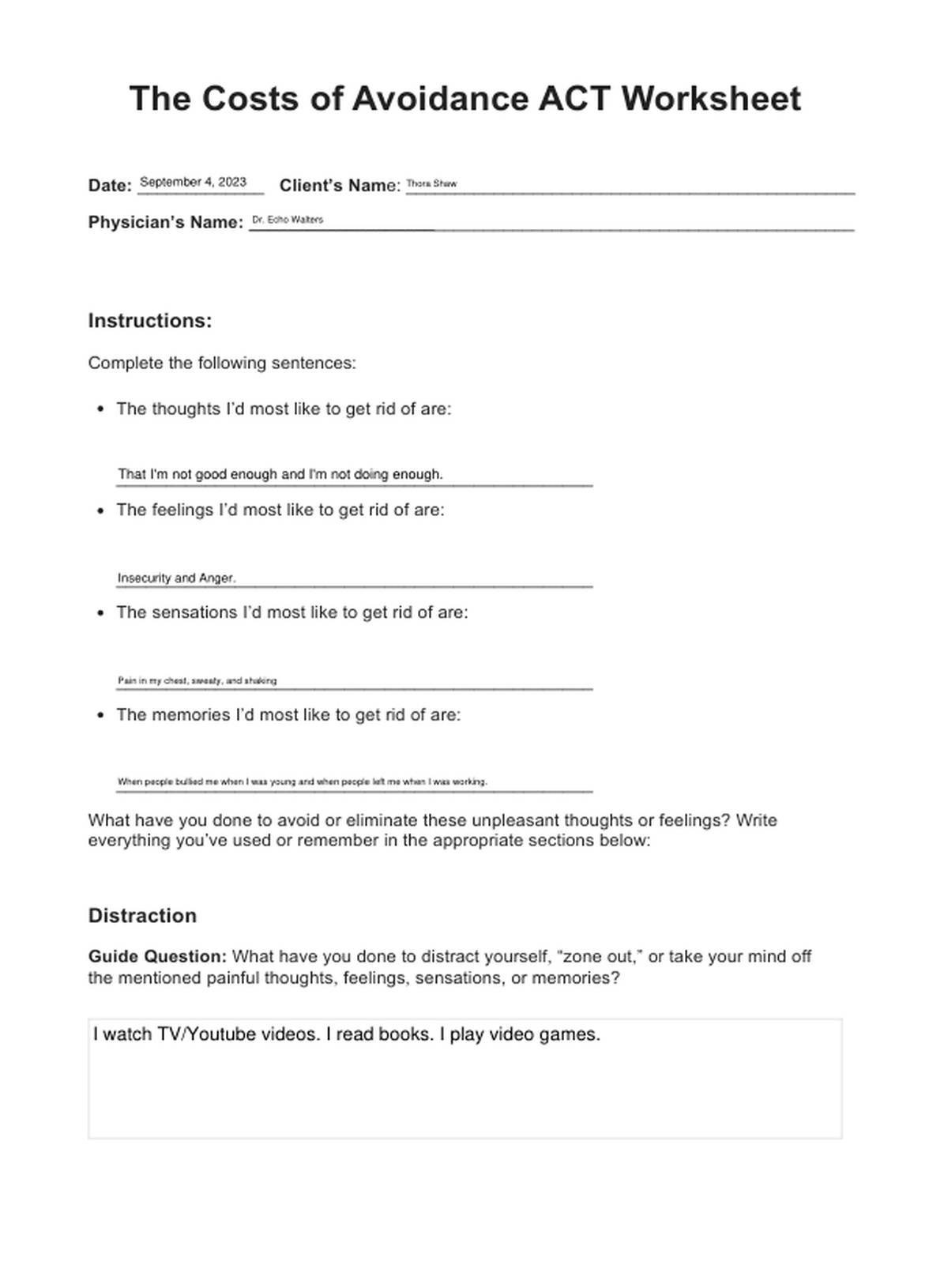

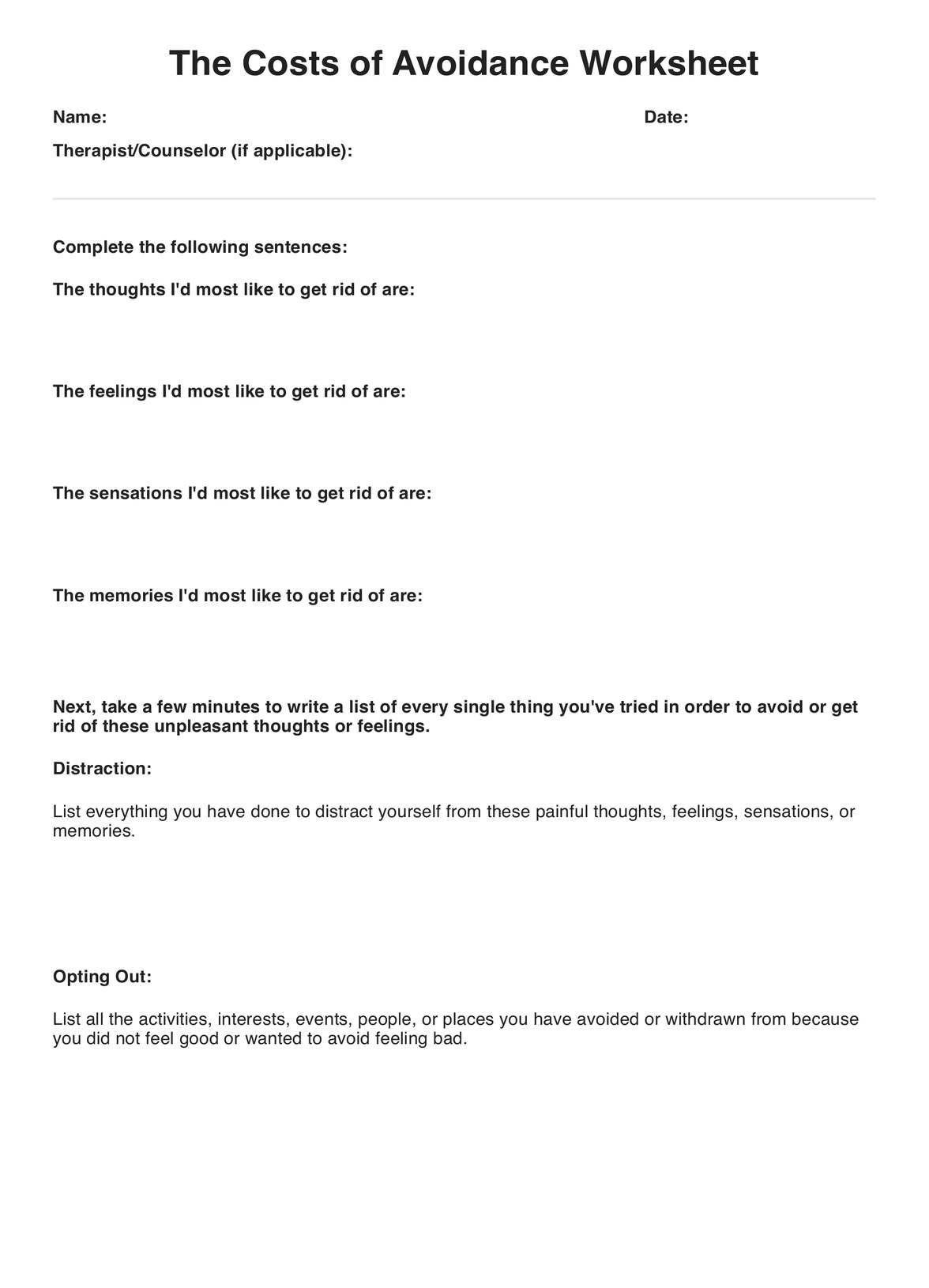














-template.jpg)





















































































